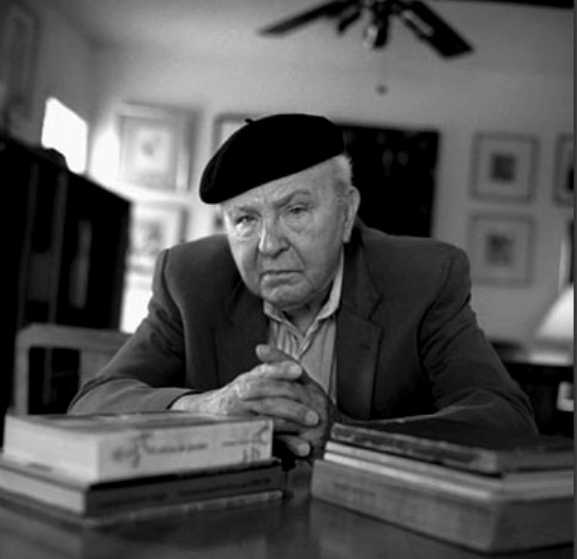4.1.2.11.1 Poems published by Lorenzo García Vega (1926 – ) in “Orígenes”

Lorenzo García Vega was one of the group members who contributed the most to the magazine, both with narrative texts and memoirs, as well as with poetic pieces very close to prose. Some of these verses would also appear in “Suite para la espera,” published under the “Ediciones Orígenes” imprint, but others were not included, at least until the triumph of the Revolution, in any poetry volume.
In “Variations,” from 1946—also included in “Suite for Waiting”—we appreciate a peculiar connection of ideas, halfway between narrative and lyrical, or rather, a lyricism that overflows and flows in rivers of words. Even the brevity of the clauses perfectly supports their transposition into free verse, but the poet seeks to connect them in a different way, to offer an uninterrupted structure, like the succession of impressions that impact his perception, glimpsed from the eye of a hurricane.
Although in the case of his poems, it is difficult to extract fragments that, like a Borgesian aleph, contain the plurality of images that are triggered in his work, in a certain way this sense of spiral or whirlpool can be appreciated in some verses, especially those that conclude the poem:
“I want to keep growing in circles. (…) Instant spin. Flight of clouds. The houses float in their shuddering deluge. Triviality, clear light. Midday.”
In 1948, he published several separate poems in another issue of Orígenes, titled “History of the Saint,” “For a Festival,” “Dance of the Backstage,” “Psalms,” and “Miniature of the Lunar Ox.” These poems lack thematic unity, at least at a first reading. This hermeticism is not deliberate but rather the fruit of the surrealist’s own desire to allow the poetic content of the unconscious to emerge.
In his work “Las astas del frío” (The Antlers of the Cold), from 1949, we can see this same disconnection of ideas, typical of an inner bewilderment that the poet lets flow, perhaps an essential value that he attributes to his work, as a form of catharsis:
“You look at the broken comets, in that corner there remain so many lights! Tomorrow is
early.
The shadow, a gesture of gesture, a blur: but history remains absent.
Your gaze, oh fixed, immediate wink
and wake up monstrously open to the night.
Who speaks of the absence, of the long cornices or creaks?
Foreheads, foreheads: early brown.
and the contempt for marble begins,
unfinished, the metaphor…
Oh my useless poem: come, jump and sing this sad ballad of the antlers of the cold!
For his part, in “Tunnel” and “Poems” from 1951, Lorenzo García proposes a certain cosmic order; the first of them even imitates the strophic structure of the sonnet, without corresponding in terms of rhyme with this poetic modality.
In the entire series of poems that he published in a 1953 issue, under the title of “Gallo” (Apparently it corresponds to the entire series), this structure of 14 verses distributed in two stanzas of four verses and two of three is reiterated, without fulfilling the rest of the requirements of the sonnet, which predicts a new disposition, emanating from a new sense of the poetic in this author.








